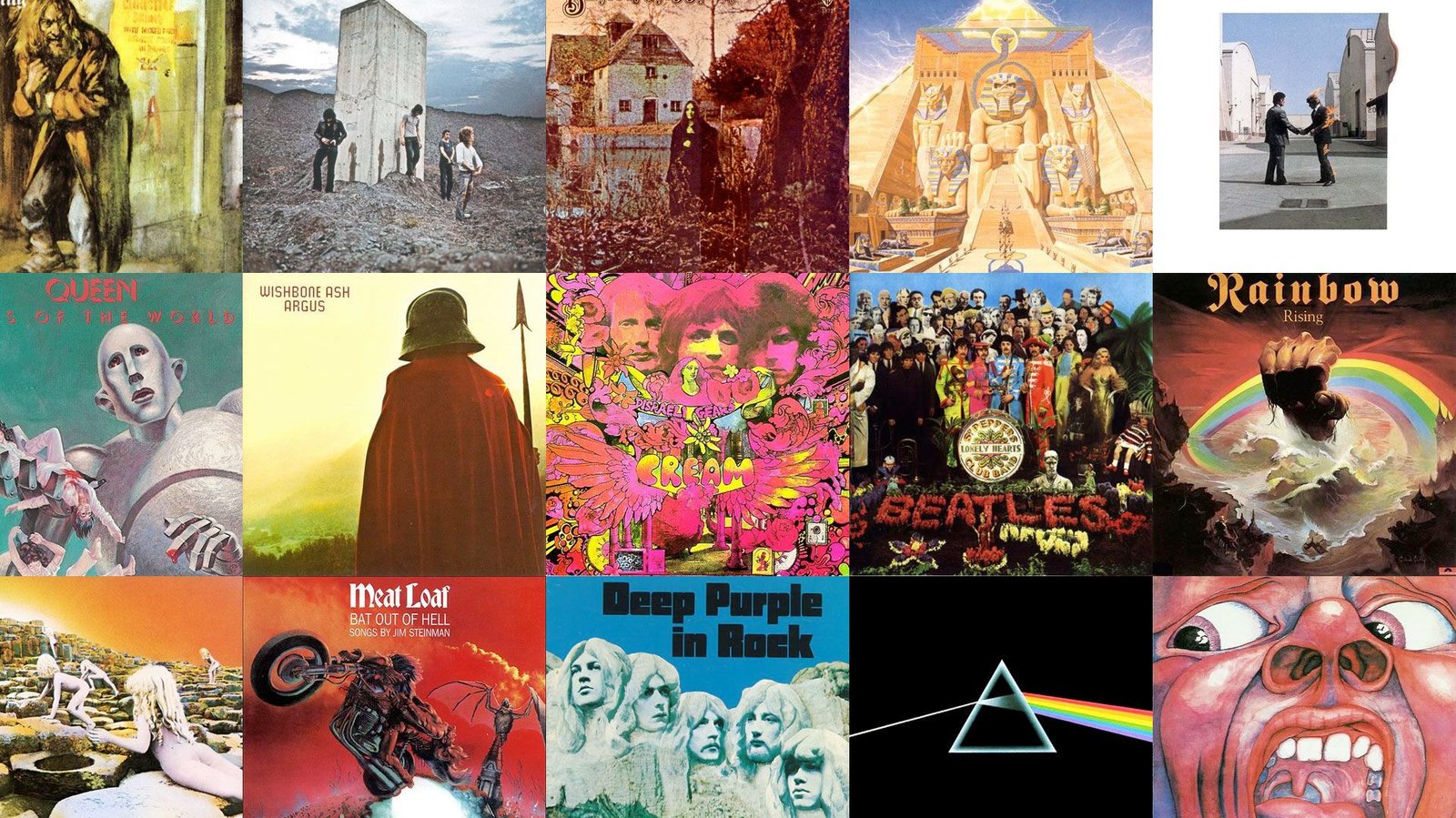
Album covers are more than just protective sleeves for vinyl records; they are an integral part of the rock music experience. Over the decades, the art of rock music album covers has evolved, reflecting changes in design trends, technological advancements, and the broader cultural landscape. This blog post delves into the history and impact of rock music album cover art, showcasing how iconic designs have shaped the industry and influenced popular culture.
The Evolution of Album Cover Art
Early Beginnings
In the early days of rock music, album covers were relatively simple. The focus was primarily on the music itself, with cover art often featuring straightforward photographs of the artists. One notable example is Elvis Presley’s 1956 debut album, which featured a simple portrait of the King of Rock ‘n’ Roll. These early covers were functional but lacked the visual flair that would come to define the genre.

The Rise of Artistic Expression
The 1960s marked a significant turning point in album cover art. As rock music became a major cultural force, artists and designers began to experiment with more elaborate and artistic designs. The Beatles’ “Sgt. Pepper’s Lonely Hearts Club Band” (1967) is a quintessential example of this era. Designed by Peter Blake and Jann Haworth, the cover featured a colorful collage of famous figures and has since become one of the most iconic and influential album covers in history.
The 1970s and 1980s: Iconic Imagery and Innovation
The 1970s and 1980s saw the rise of rock bands with larger-than-life personas, and album covers reflected this trend. The use of elaborate artwork, surreal imagery, and intricate designs became more prevalent. Pink Floyd’s “The Dark Side of the Moon” (1973) is a prime example of this period. Designed by Storm Thorgerson of Hipgnosis, the cover featured a simple yet powerful image of a prism dispersing light. Its minimalist design has become synonymous with the band’s ethereal sound.
The 1980s introduced new technological advancements that impacted album cover design. The use of digital art and photography allowed for more complex and visually striking covers. Albums like Michael Jackson’s “Thriller” (1982) featured iconic imagery, such as Jackson’s infamous red jacket and glowing eyes, making it a standout in both music and visual art.
Iconic Album Covers and Their Impact
The Rolling Stones’ “Sticky Fingers” (1971)
One of the most controversial and memorable album covers in rock history is The Rolling Stones’ “Sticky Fingers.” Designed by Andy Warhol, the cover featured a provocative image of a man’s crotch in tight jeans, complete with a working zipper. The design pushed boundaries and challenged societal norms, making it a defining moment in album cover art.
Nirvana’s “Nevermind” (1991)
Nirvana’s “Nevermind” is another iconic album cover that has left a lasting impact. Designed by Kirk Weddle, the cover features a baby swimming towards a dollar bill on a fishhook. The image captured the essence of the grunge movement and has become a symbol of 1990s rock culture. Despite its initial controversy, the cover’s powerful and provocative imagery resonated with a generation of fans.
The Role of Album Covers in Branding and Marketing
Creating a Visual Identity
Album covers are crucial for creating a visual identity for rock bands. A well-designed cover can become synonymous with the music itself, helping to establish a band’s brand and image. For example, the distinctive artwork of AC/DC’s “Back in Black” (1980) featuring a black cover with minimal text, has become iconic and instantly recognizable. The cover’s simplicity and boldness reflect the band’s rock ‘n’ roll attitude.
Enhancing the Listening Experience
Album covers also play a role in enhancing the listening experience. They provide a visual representation of the music and can offer insight into the themes and concepts explored in the album. For example, the cover of Led Zeppelin’s “Led Zeppelin IV” (1971), which features a rustic image of a hermit carrying a lantern, complements the album’s mysterious and eclectic sound. The cover art invites listeners to explore the album’s deeper meanings and themes.
The Future of Album Cover Art
Digital and Interactive Designs
As the music industry continues to evolve, so too does album cover art. The digital age has introduced new possibilities for album design, including interactive and multimedia elements. Artists and designers are experimenting with augmented reality (AR) and virtual reality (VR) to create immersive album experiences. For instance, some modern albums feature AR-enhanced covers that come to life when viewed through a smartphone app, providing fans with an interactive experience.
The Revival of Physical Media
Despite the rise of digital music, there has been a resurgence in interest in physical media, including vinyl records. This revival has led to a renewed focus on album cover art, with collectors and enthusiasts valuing the artistry and craftsmanship of physical album releases. Bands and artists are taking advantage of this trend by investing in high-quality, visually stunning album covers that capture the essence of their music.
Conclusion
The art of rock music album covers has come a long way from its humble beginnings. From simple photographs to elaborate and innovative designs, album covers have become an integral part of the rock music experience. They reflect the evolving tastes and trends of each era and continue to play a crucial role in shaping the visual identity of rock bands. As technology advances and new artistic possibilities emerge, the future of album cover art promises to be as dynamic and creative as ever.





